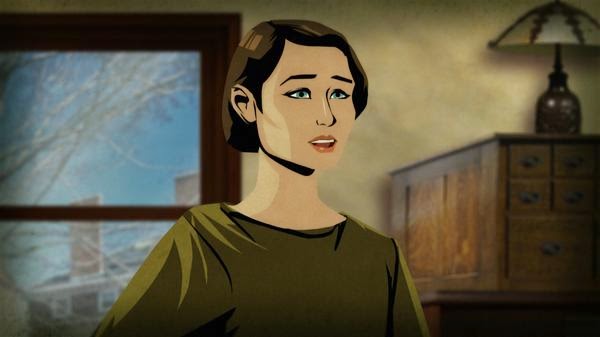For the real meat of the episode we jump forward to the late-19th century. A scientist called Edward Pickering employed "computers" - a team of women - to map the stars, taking years to classify hundreds of thousands of stars.
The team was led by Annie Jump Cannon and Henrietta Swan Leavitt, who used spectroscopy to determine the stars' chemical composition and came up with 7 categories and 10 sub-categories with which to classify them.
The animated segments of the episode beautifully show them working at their day jobs as Tyson's respectful voiceover keeps things interesting.
Cecilia Payne came from the UK to join their group and worked out that the categories they had come up with corresponded to a star's temperature. Her PhD thesis was that stars were primarily composed of hydrogen and helium (something I would have assumed was known before then, but before Payne made this discovery astronomers thought that stars were made up of the same elements as the Earth and in roughly the same proportions). If Tyson's voiceover was respectful before, he is positively in awe as he describes this, saying it pioneered modern astrophysics.
The next section of the programme is on the life of stars from 'birth' to 'death', including the sun - we see the sun becoming a red giant in 4 to 5 billion years, then collapsing again into a white dwarf, as Tyson discusses the atomic processes that cause these transformations.
Other stars have different fates in store depending on their size and mass, and if they are part of binary star systems. The heaviest stars end up as supernovas, black holes, or hypernovas. Eta Carinae is 100 times heavier than the sun and could become a hypernova, destroying entire star systems and their planets up to hundreds of light years away from the centre of the explosion. Tyson reassures us earth is 7500 light years from Eta Carinae and is safe, but will see it as the brightest star in the sky when it goes.
Tyson closes the episode by talking about how the milky way galaxy would look from the point of view of a globular cluster, in one of the most poetic speeches in all of Cosmos - and echoing closely Carl Sagan's lines from the original series:
"A still more glorious dawn awaits.
Not a sunrise, but a galaxy rise.
A morning filled with 200 billion suns.
The rising of the milky way."













No comments:
Post a Comment